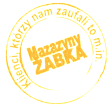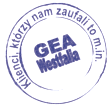Hooker, whistleblower - what are the differences?

Who is the hooker?
A worker who intends to become a hookman should know the scope of his job so that he is not surprised. Its main function is to suspend and unhook loads on equipment such as a crane, crane or overhead crane. In addition to this, the hookman has the task of controlling such a crane and using it to also move the load if necessary. An employee in this position does not need to have training from the Technical Inspection Authority. However, this does not mean that he or she does not have to undergo training in the operation of the equipment. Such a profession is classed as particularly hazardous, so knowledge of health and safety regulations is essential.
Features of a good hooker
The person in the hooker's position should wear an item that distinguishes him/herself from other members of the team, e.g. a reflective armband, waistcoat or helmet in different colours than the other workers. It is a good idea for such a person to be highly visible due to his or her function. The hookman should display calmness and composure. Even the smallest misstep can have serious consequences for the whole team. It is important that there is good communication between the hook and the others and, above all, between the hook and the crane operator. A good working atmosphere can be essential for this.
Signaller
Until recently, one person could act as both hook and whistleblower. In 2019, the regulations have changed and these are now two different positions. The duties of a signaller include - as the name suggests - giving signals about the progress of work. These signals can be given in various ways: by sound, appropriate hand movements or light markings. The person in this position must take particular care for his or her own safety as well as that of others, especially the crane operator. It is therefore a very responsible job in which lapses are unacceptable.
How's that for training?
An employee who works on a crane or overhead crane must have the appropriate qualification certificate to be able to legally work on such equipment. He or she should know what to do on the job and how to operate the crane. In this case, simple training may not be sufficient and it may be necessary to take a professional course at a training centre. Training at this level will ensure safe work and prevent accidents, so it is worth considering.
We already know that hook and signalman are two different jobs as of late. Both professions are extremely important in order to work safely with loads suspended from a crane. To this end, a course addressing health and safety issues and the correct handling of loads can prove salutary. Professional training for these jobs will provide ERGON Centre for Staff Improvement!






























